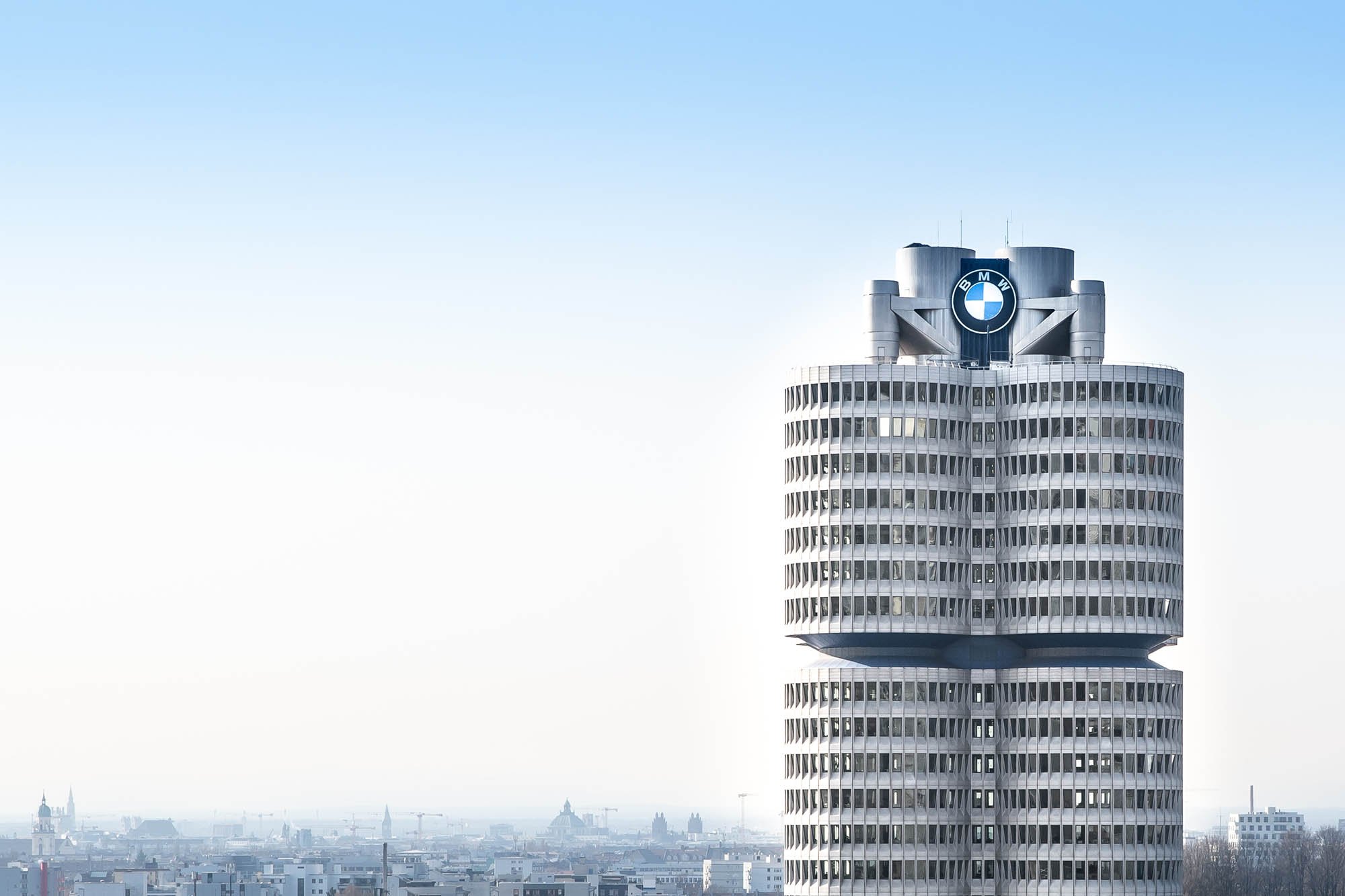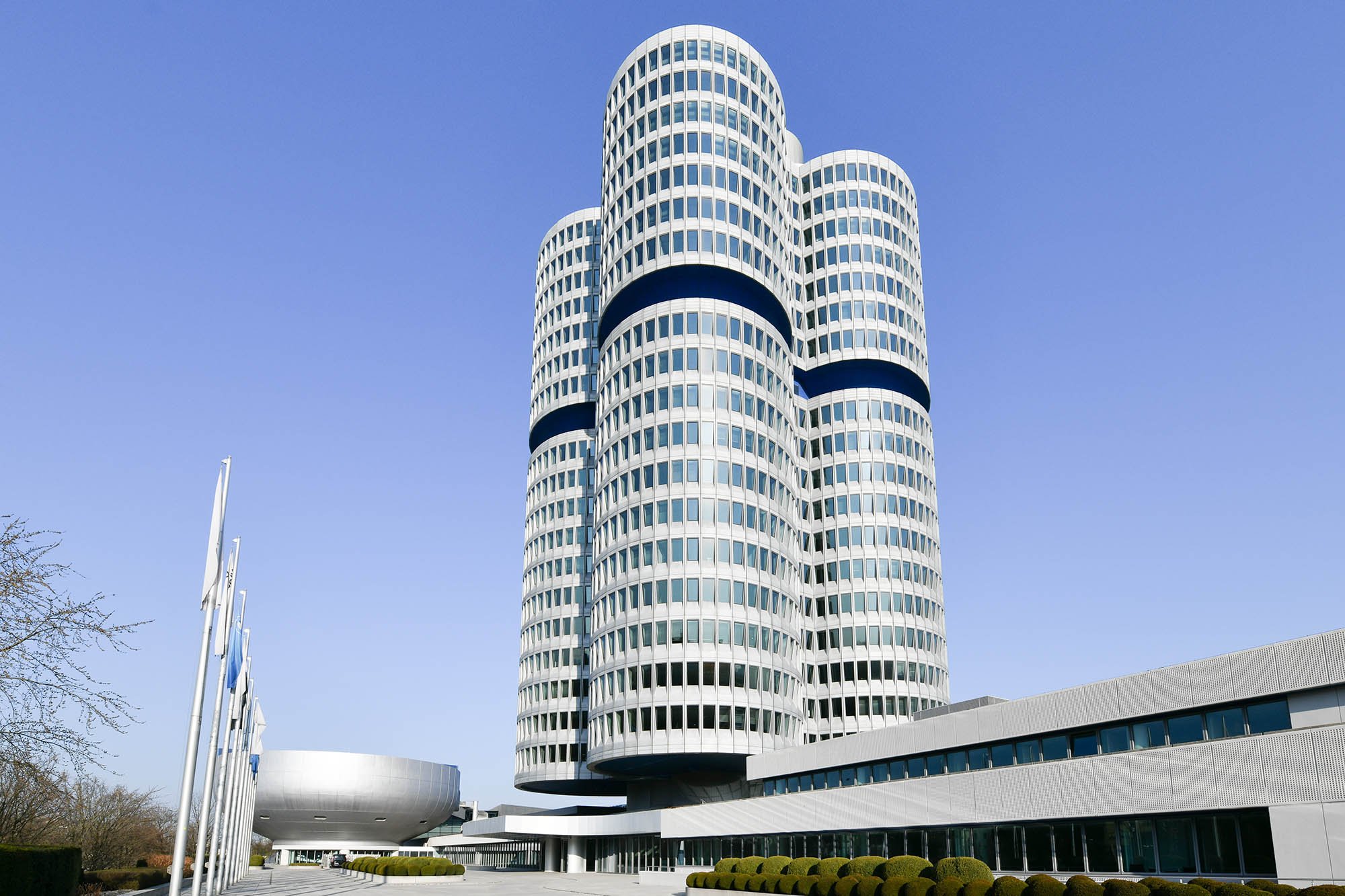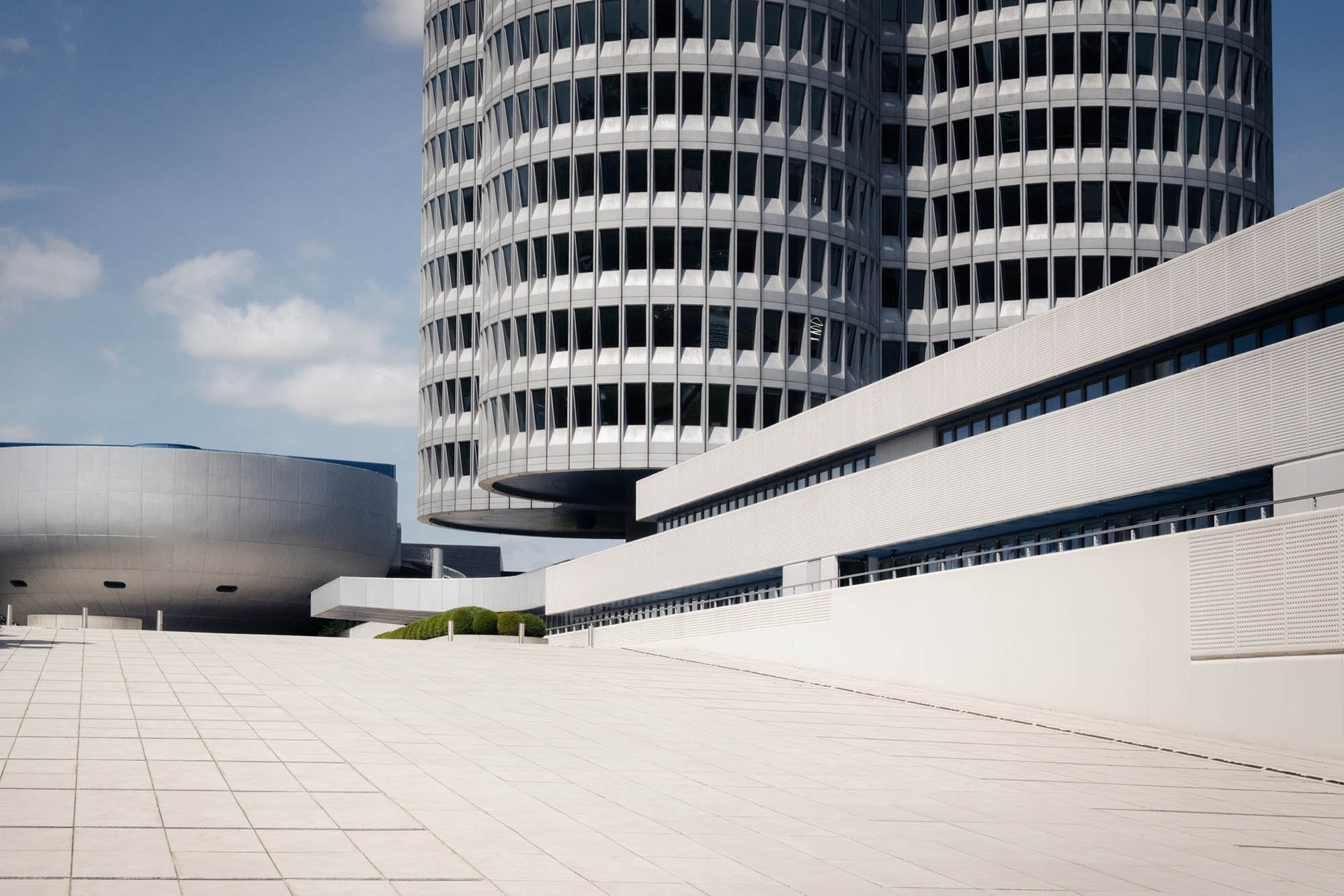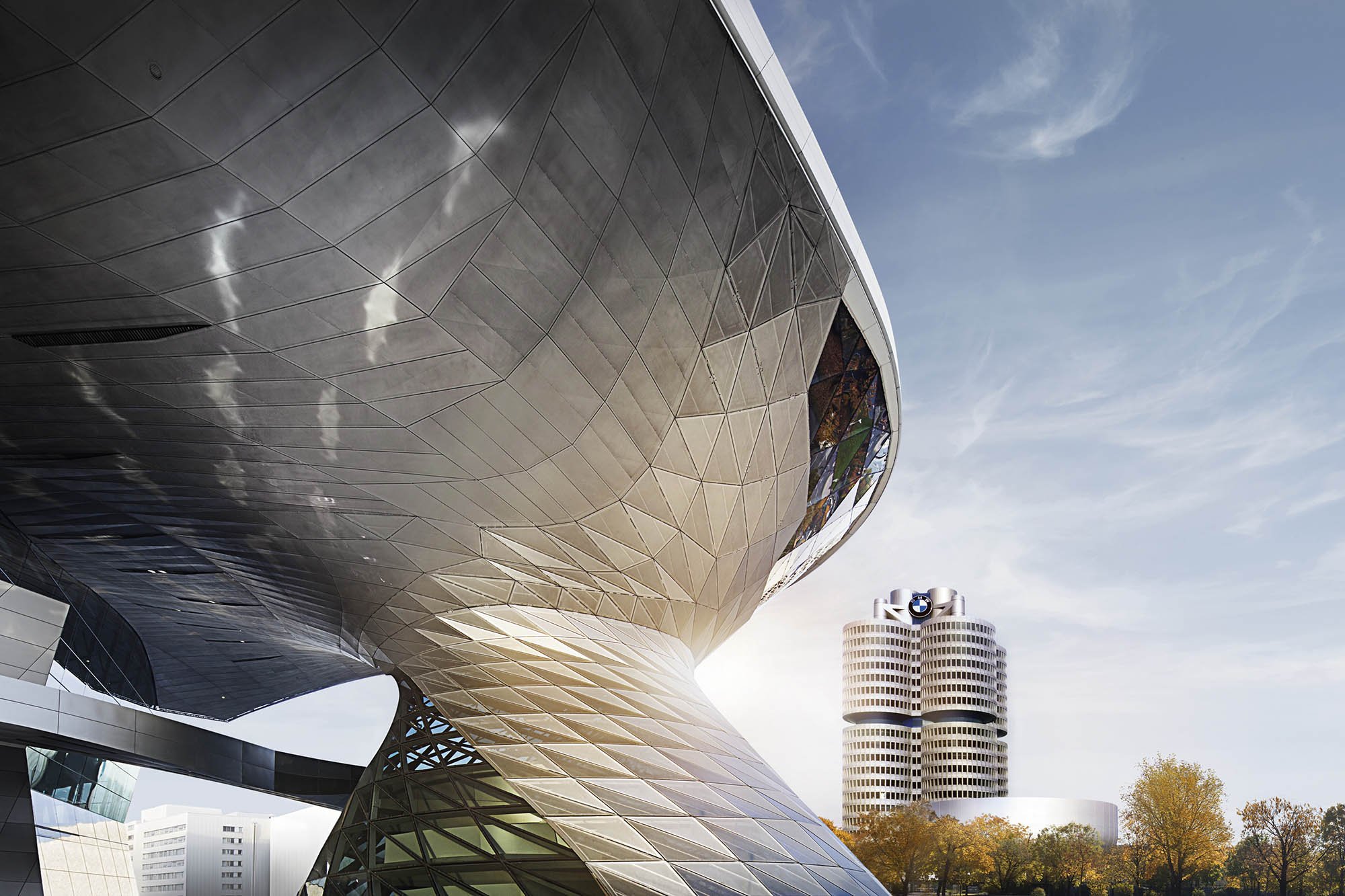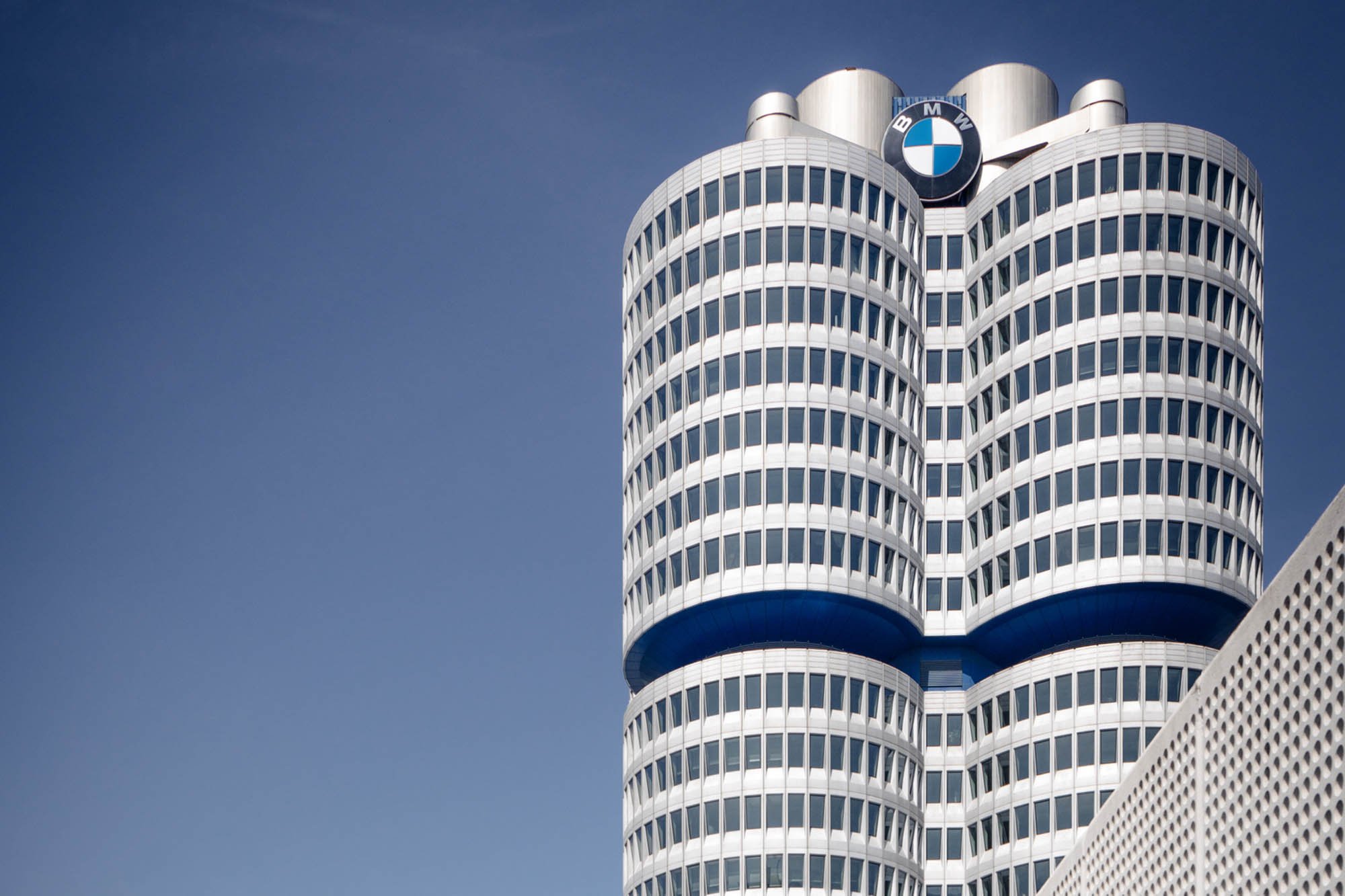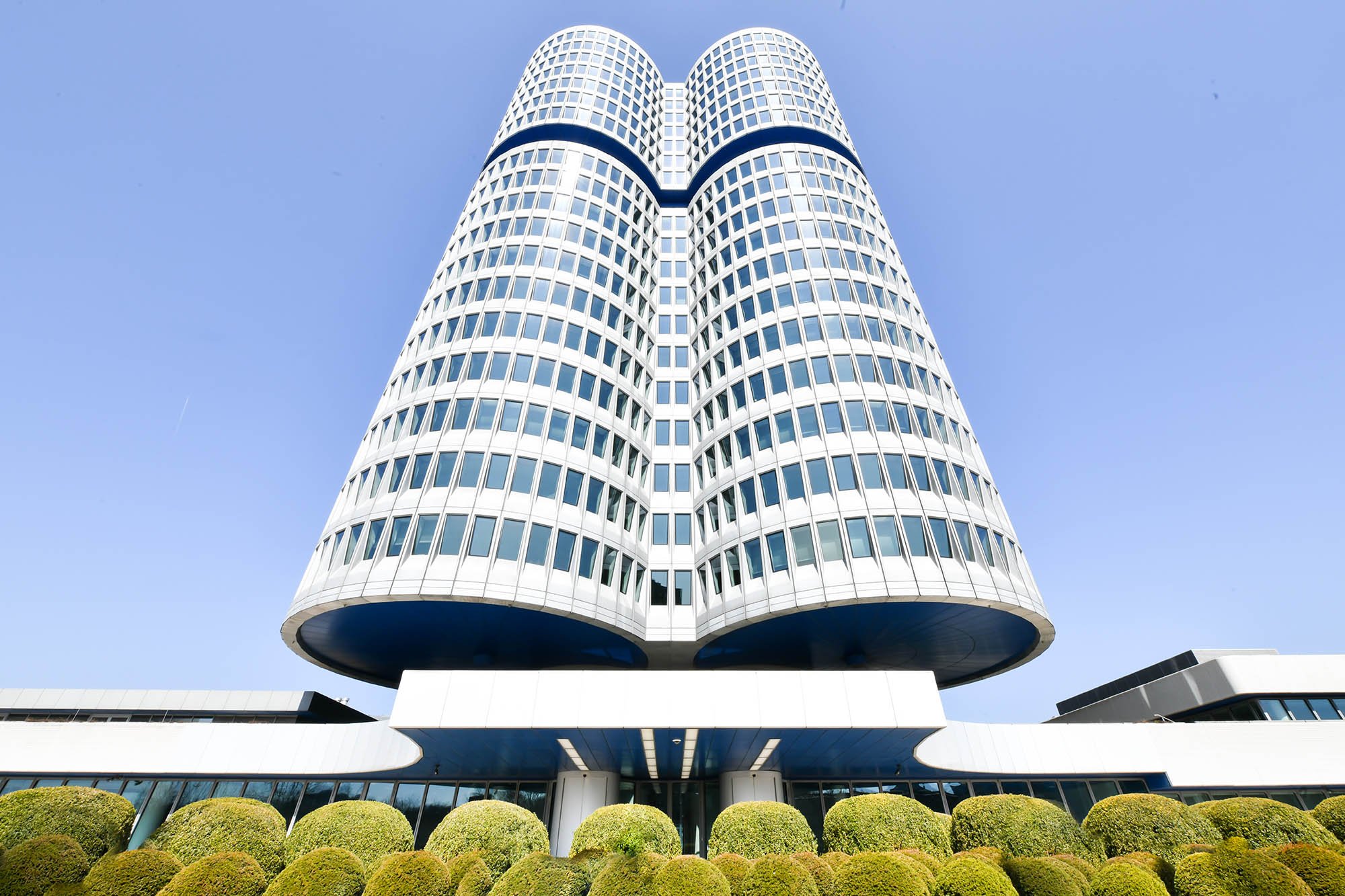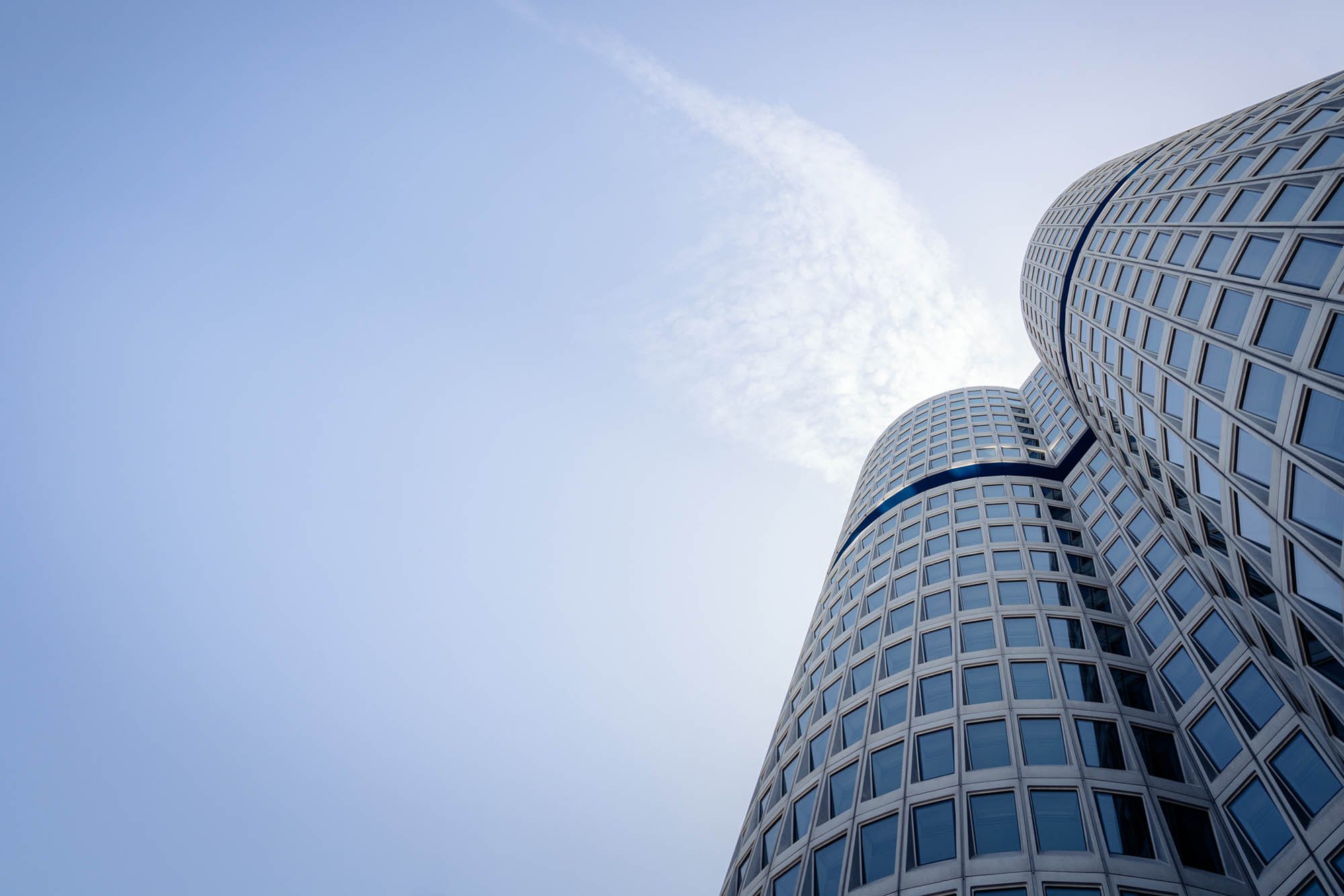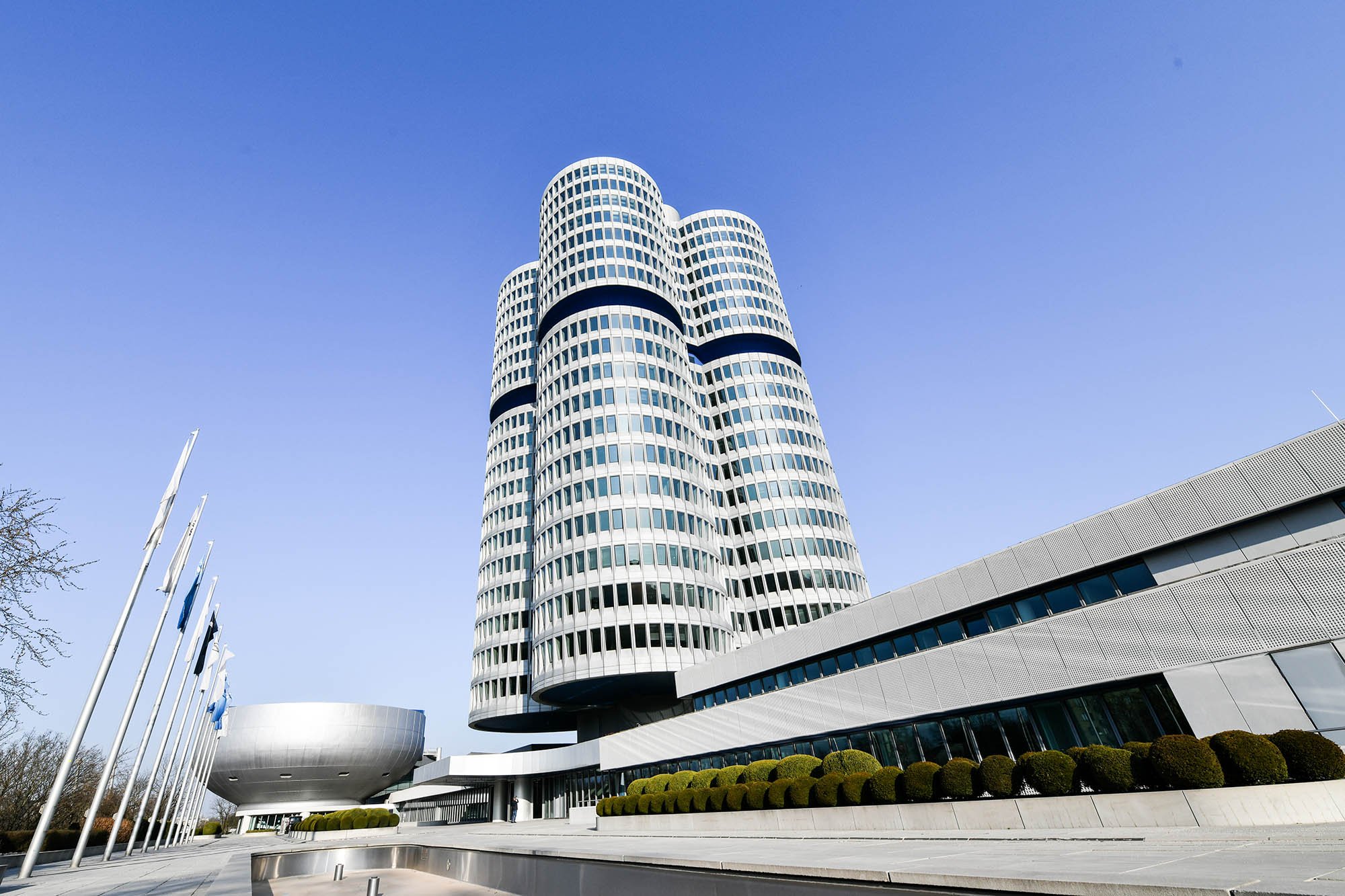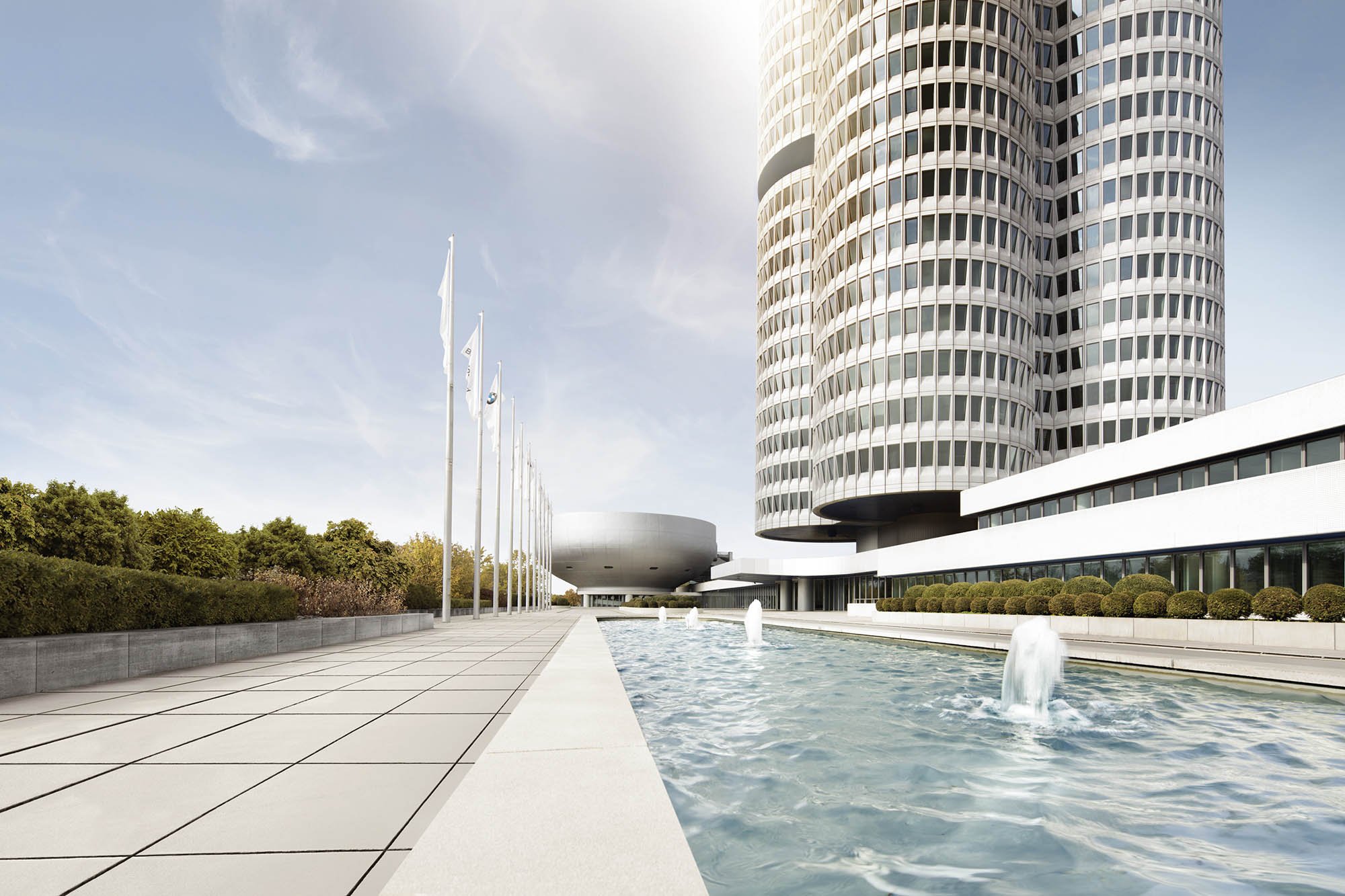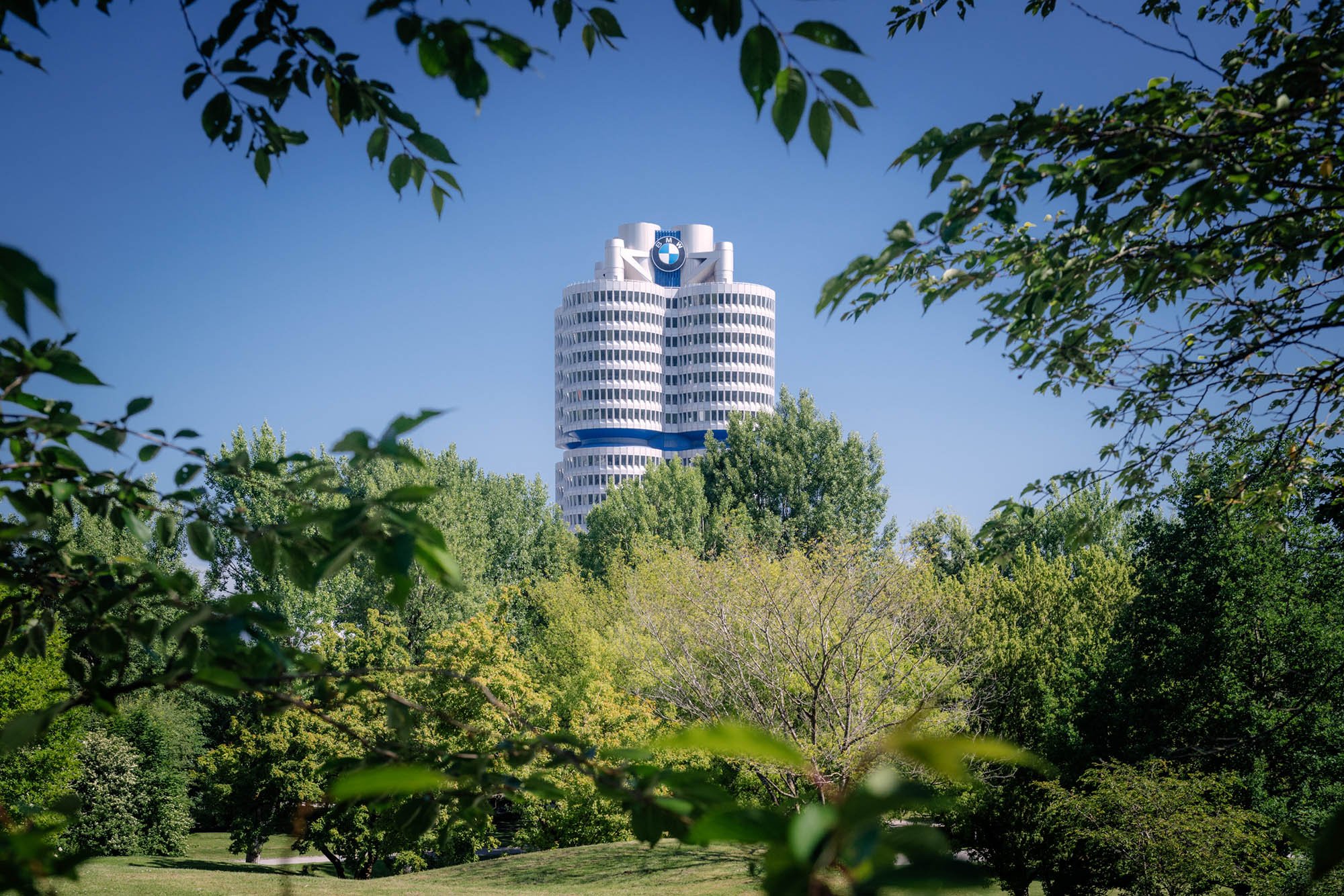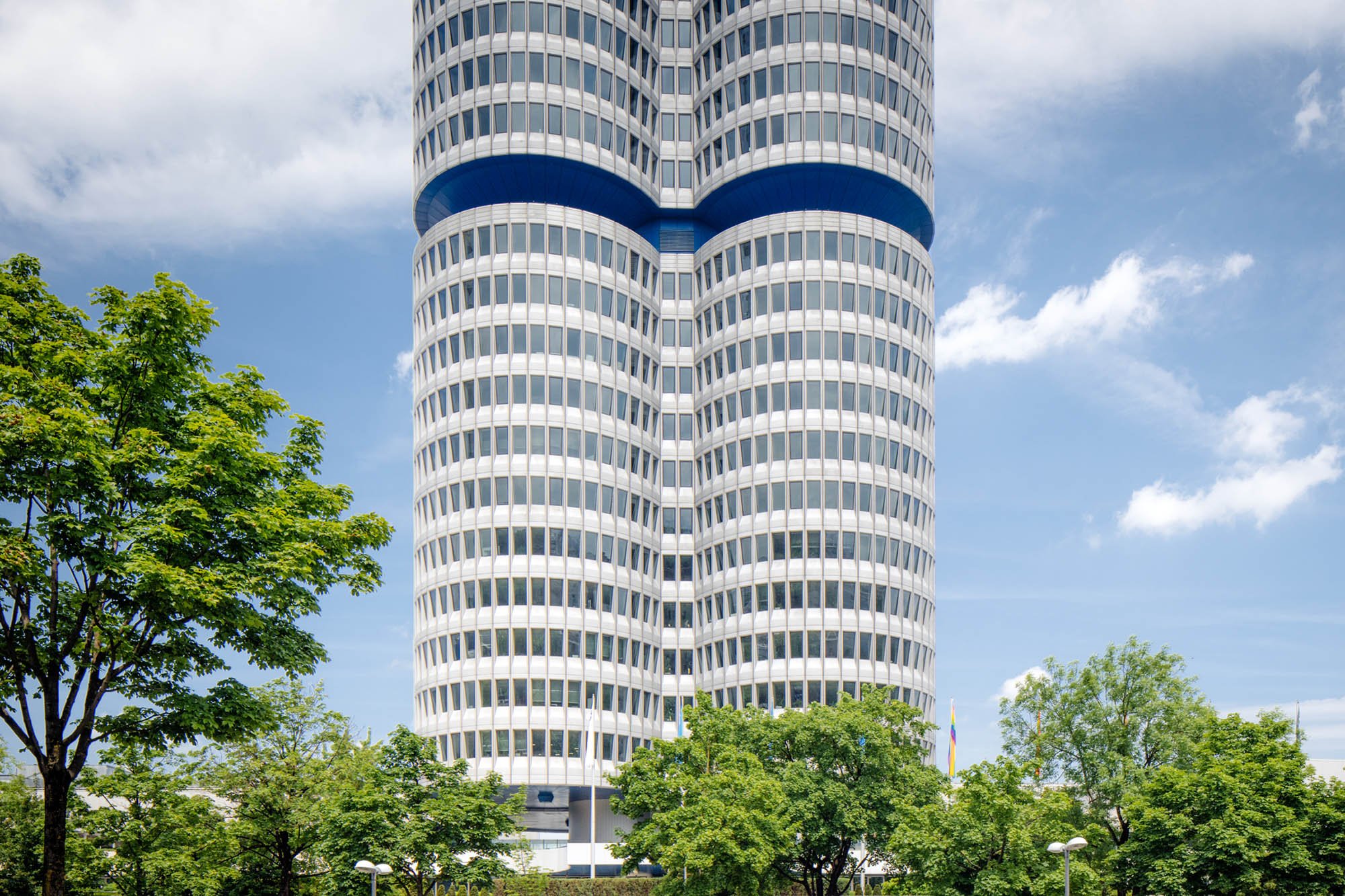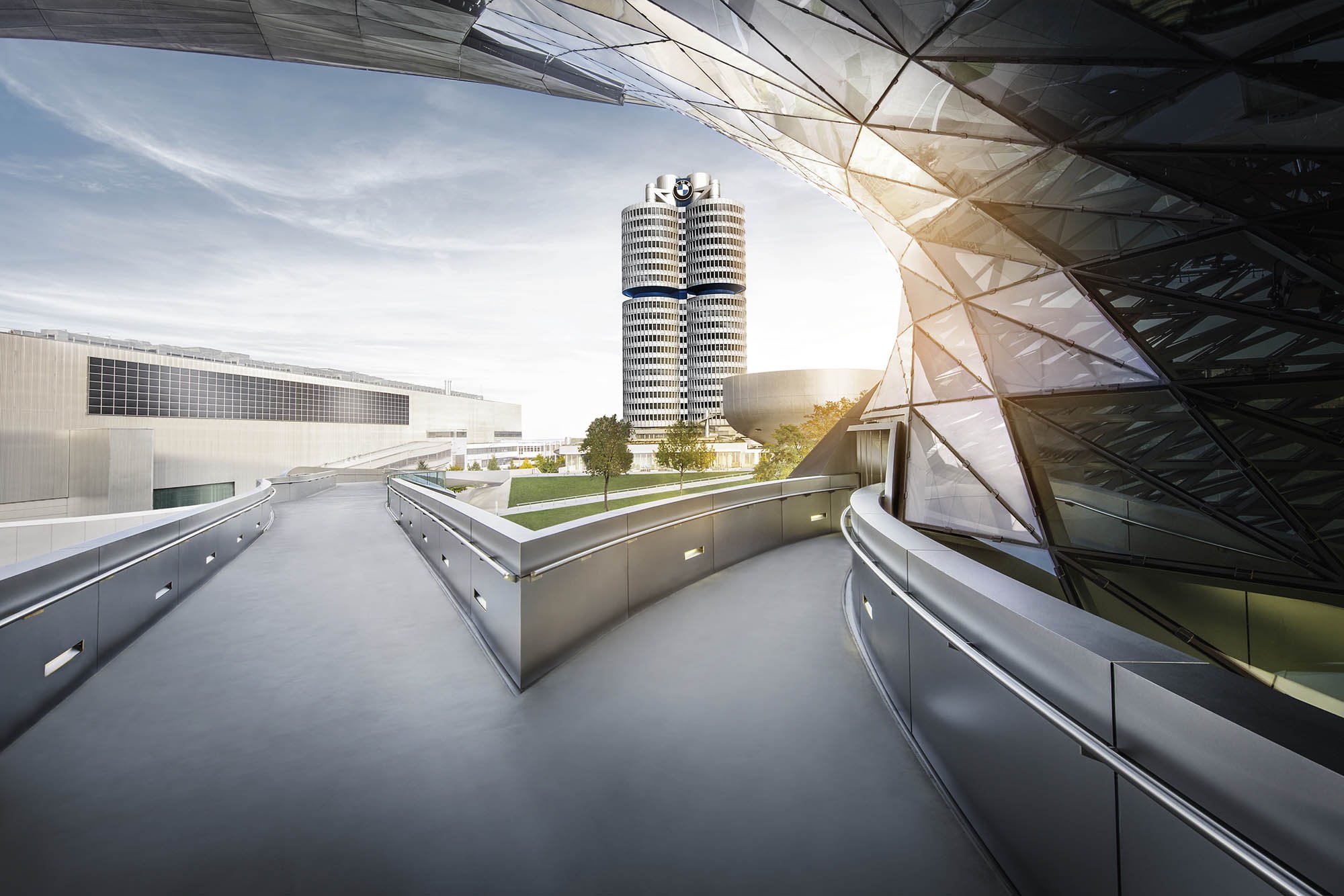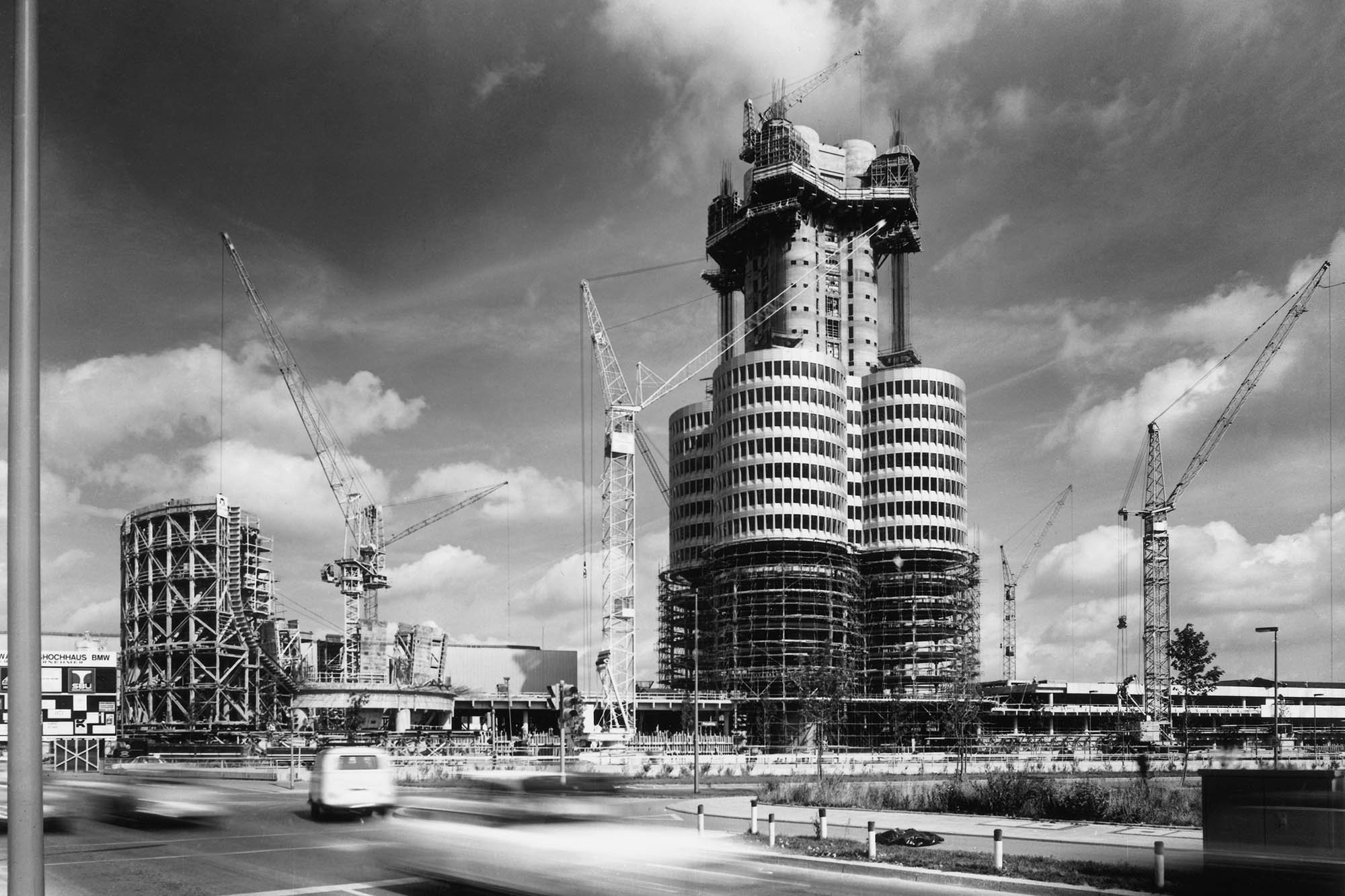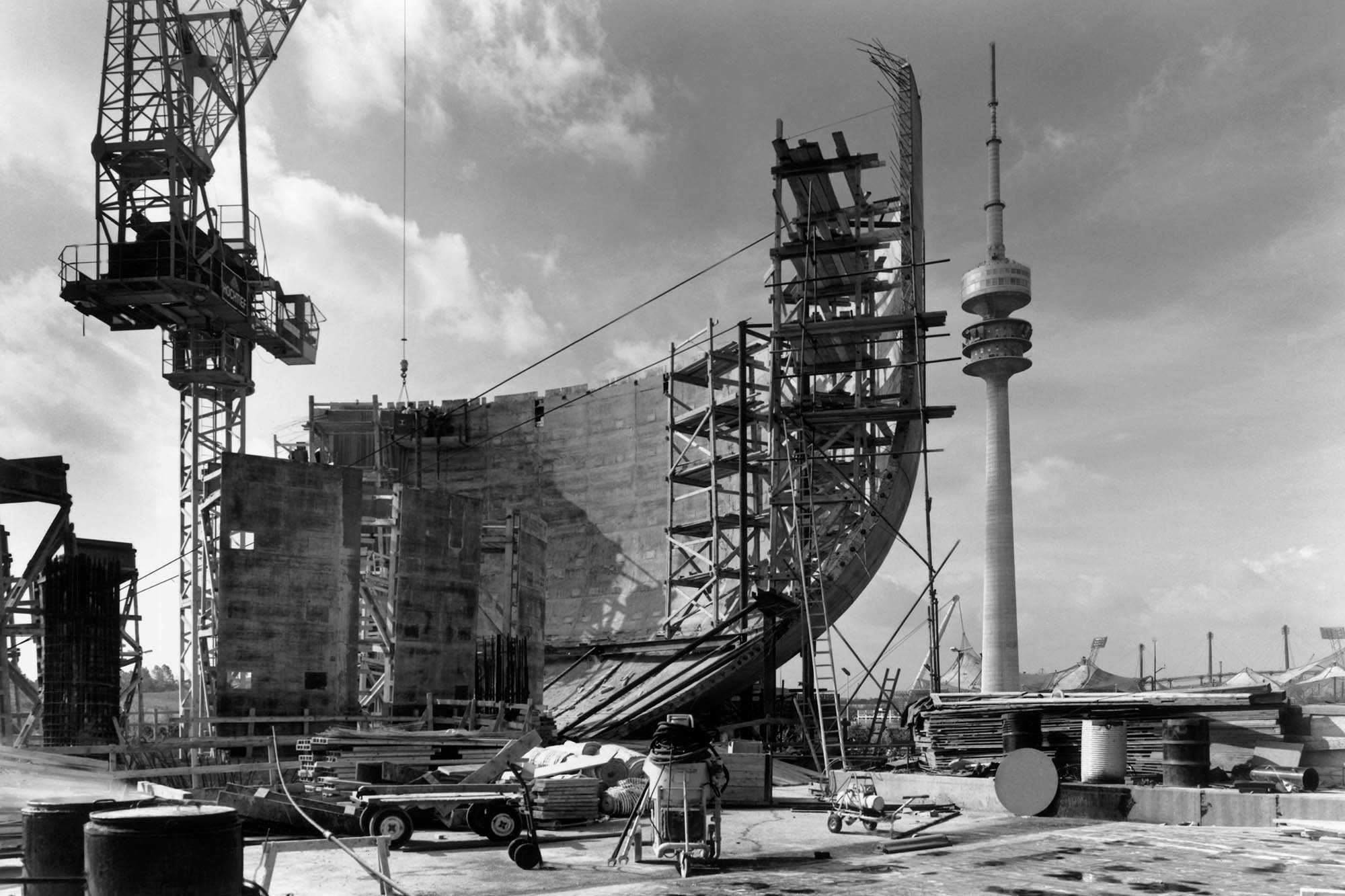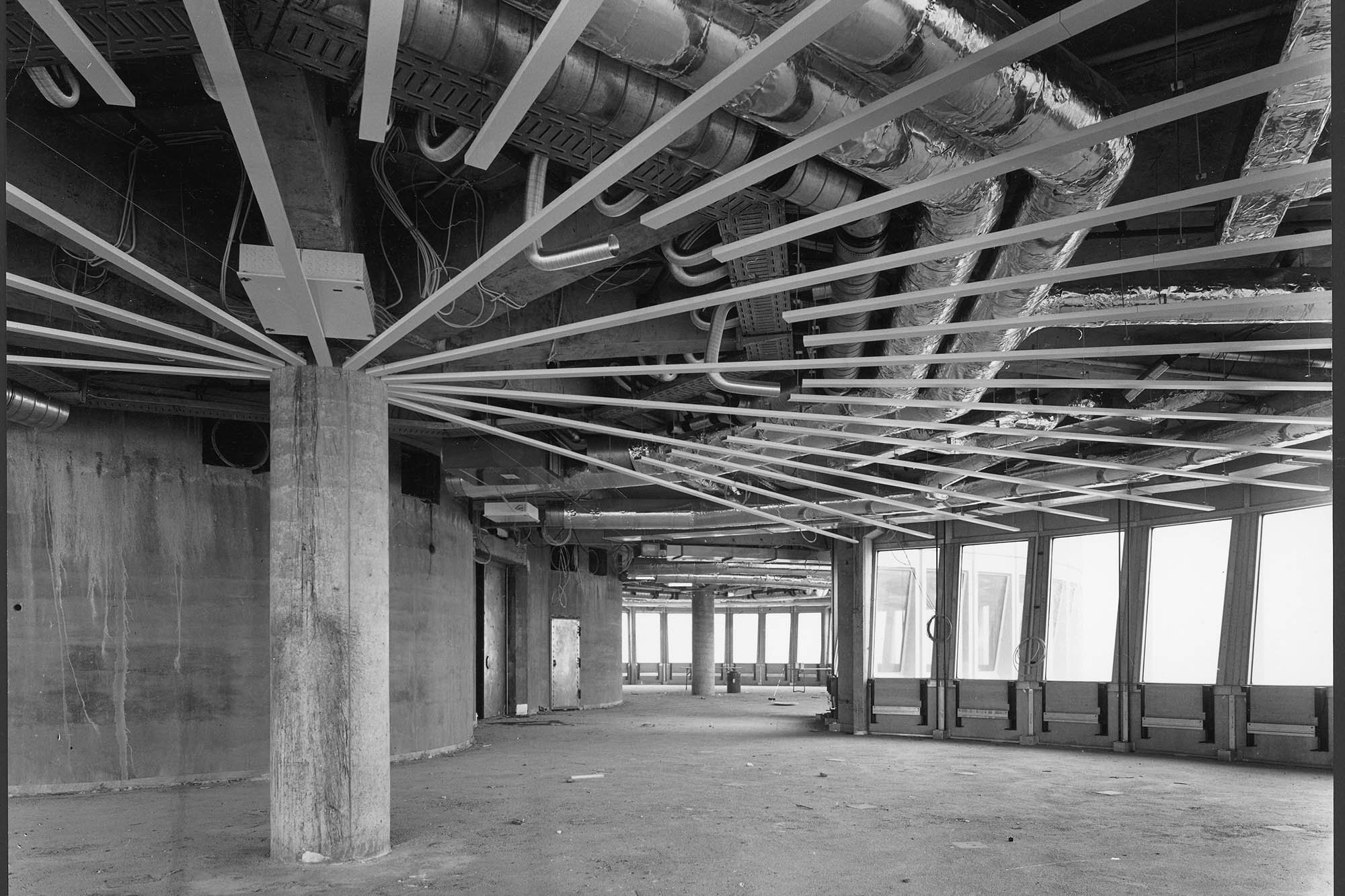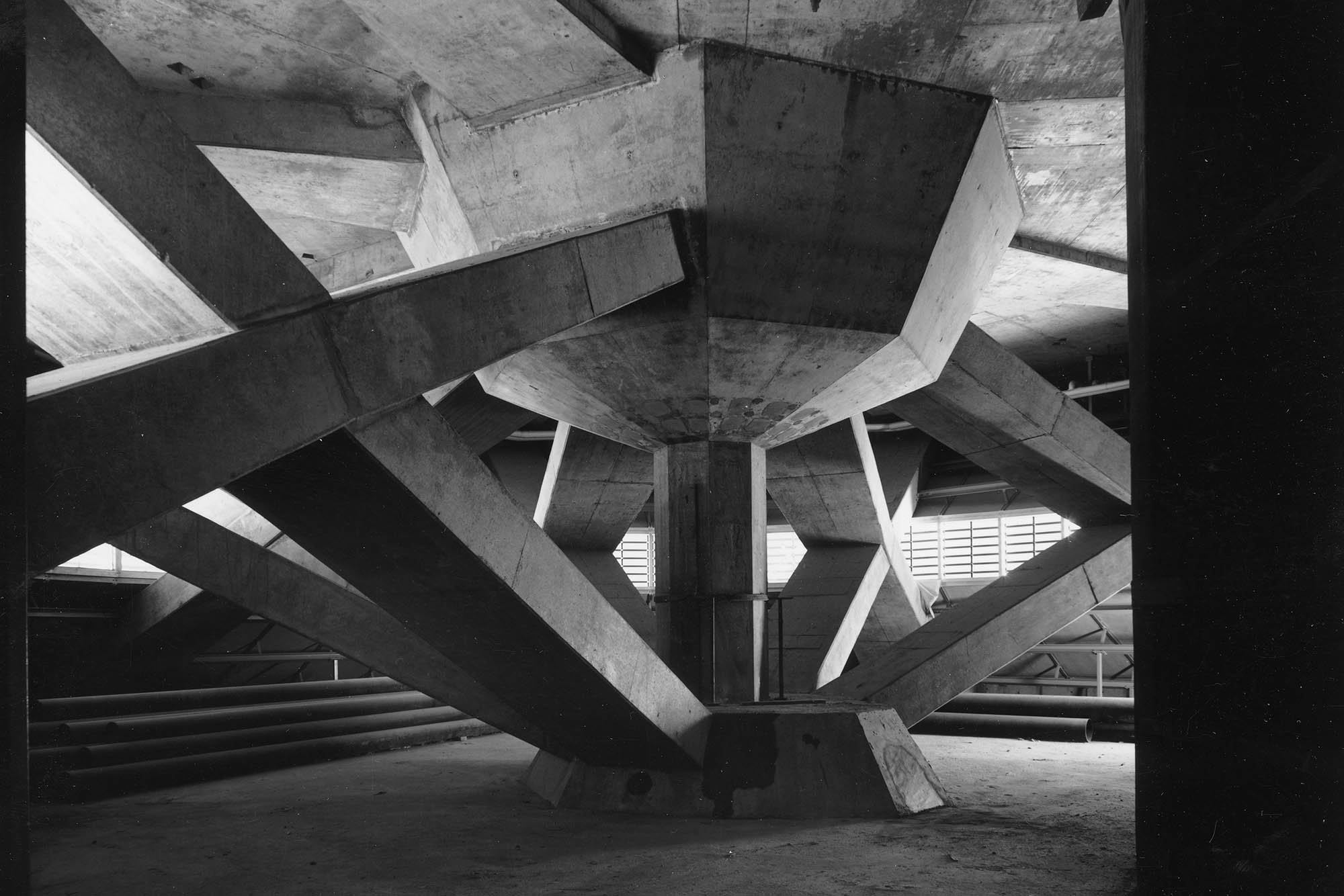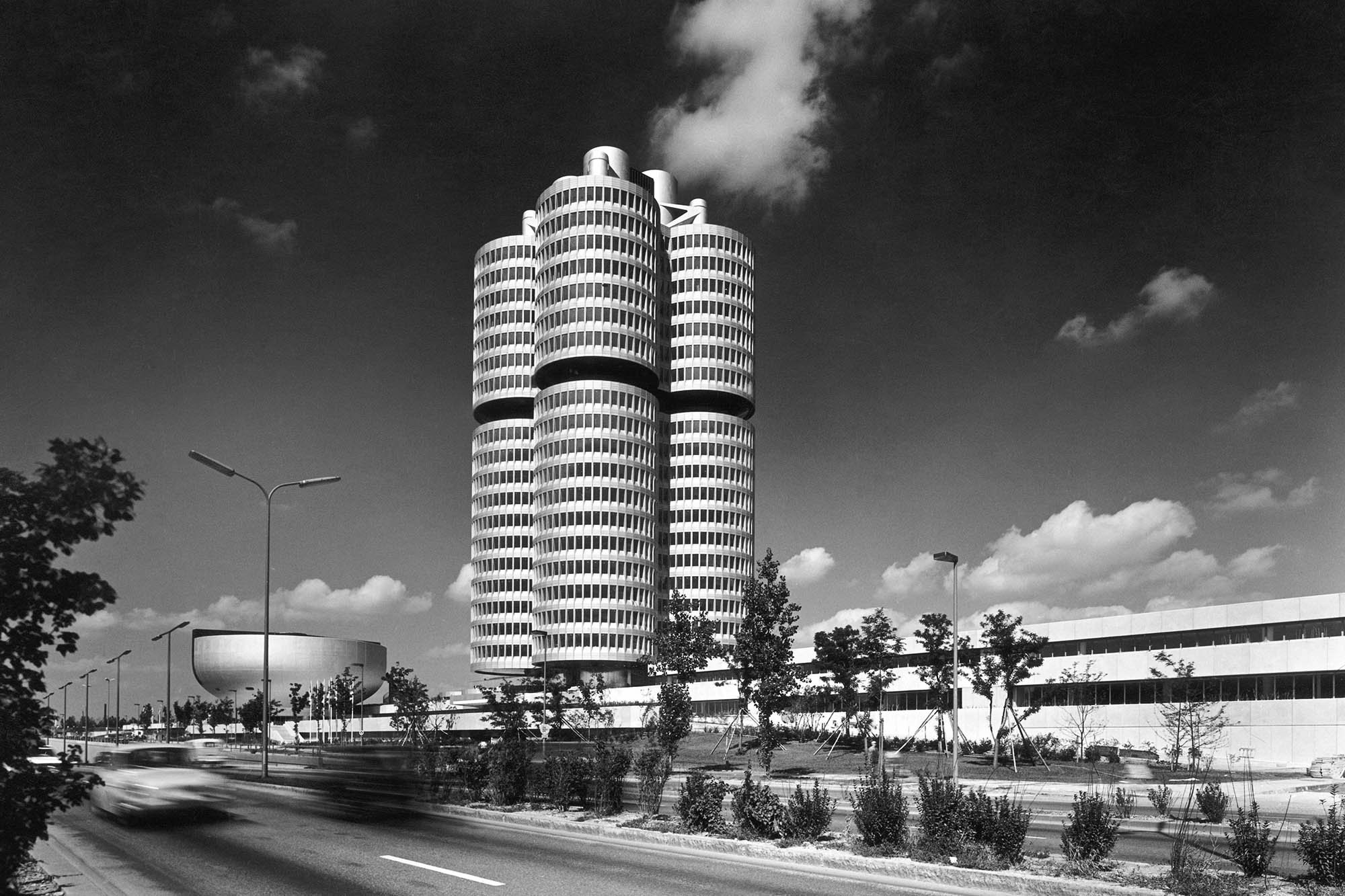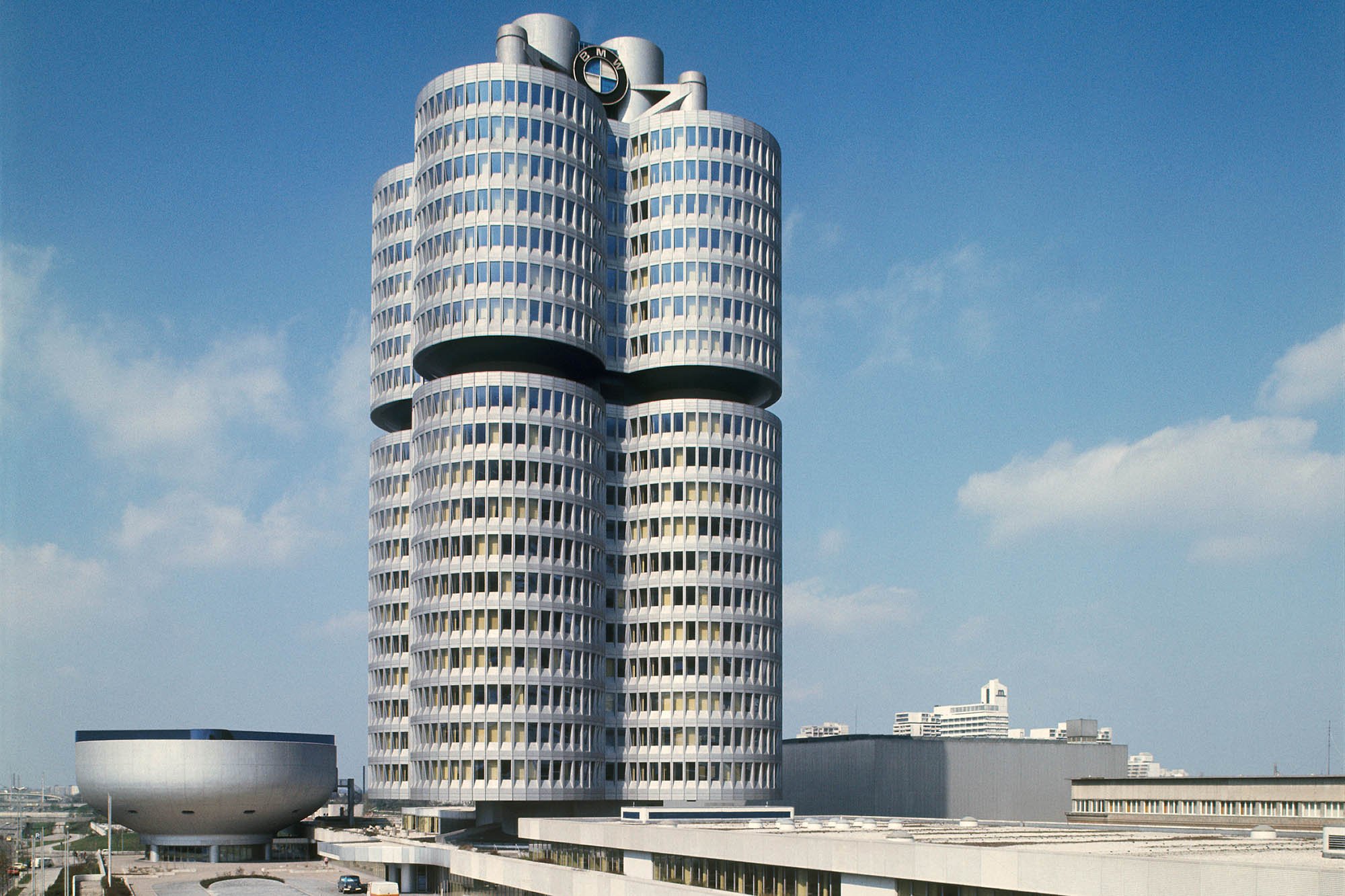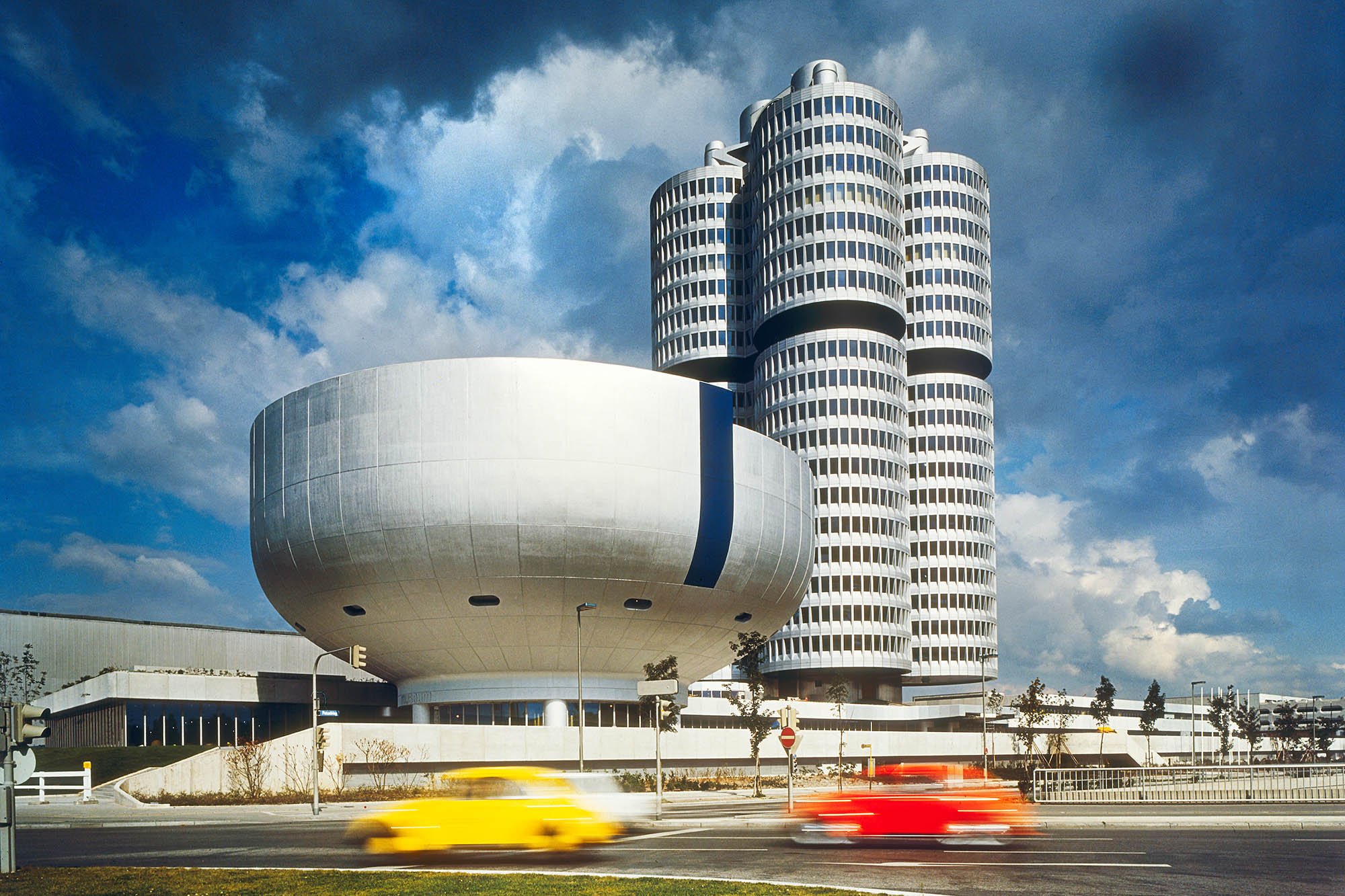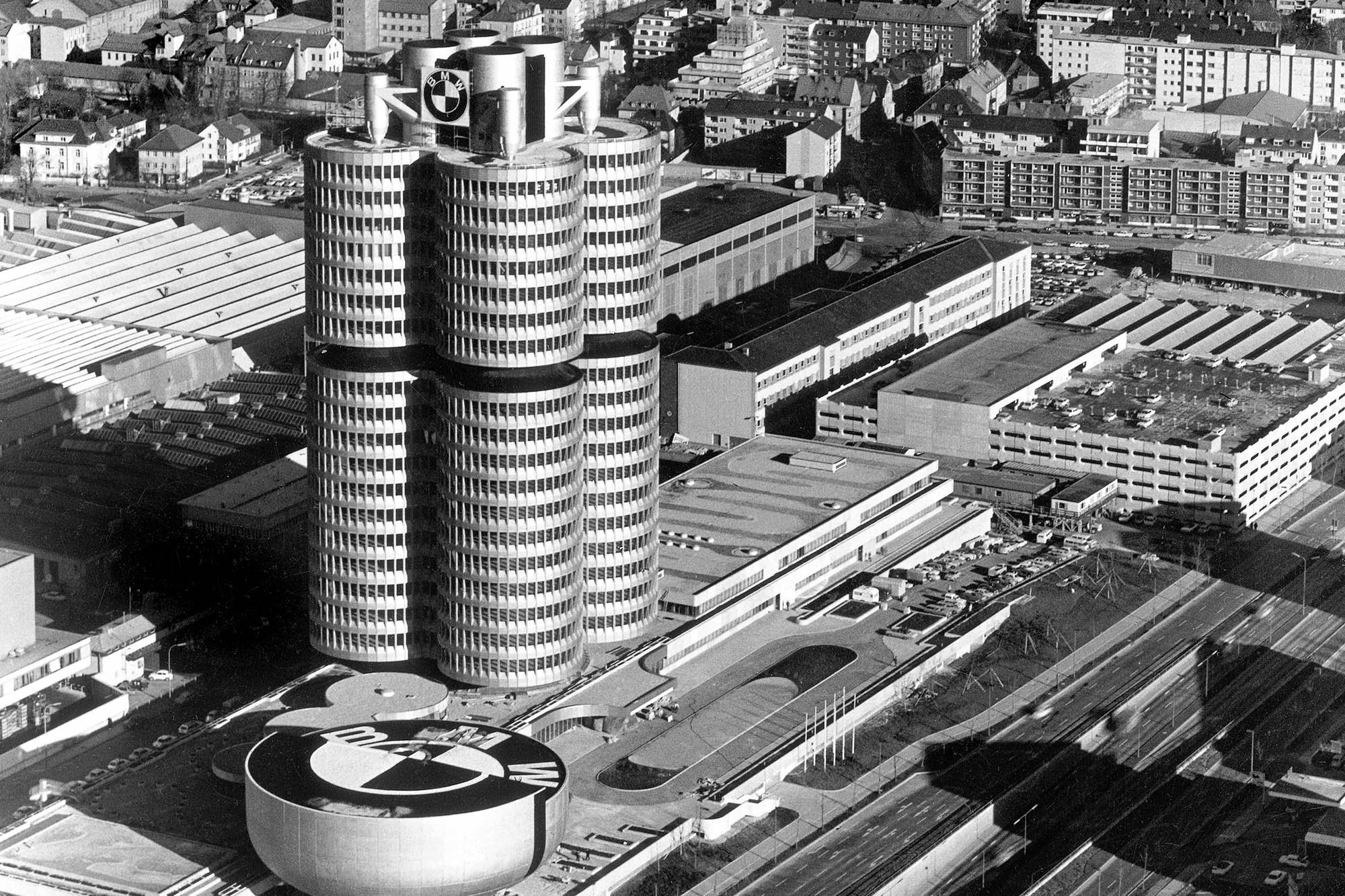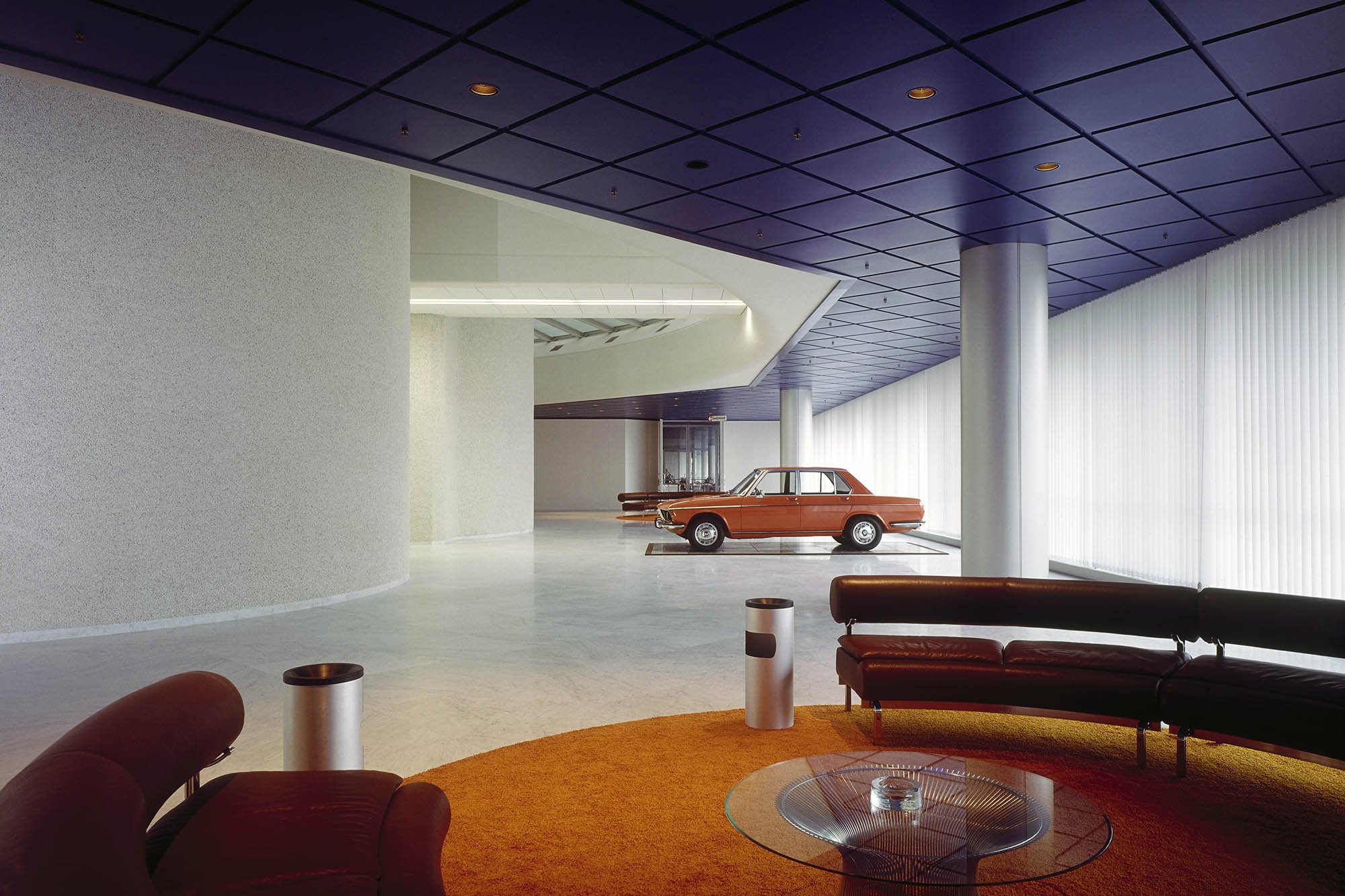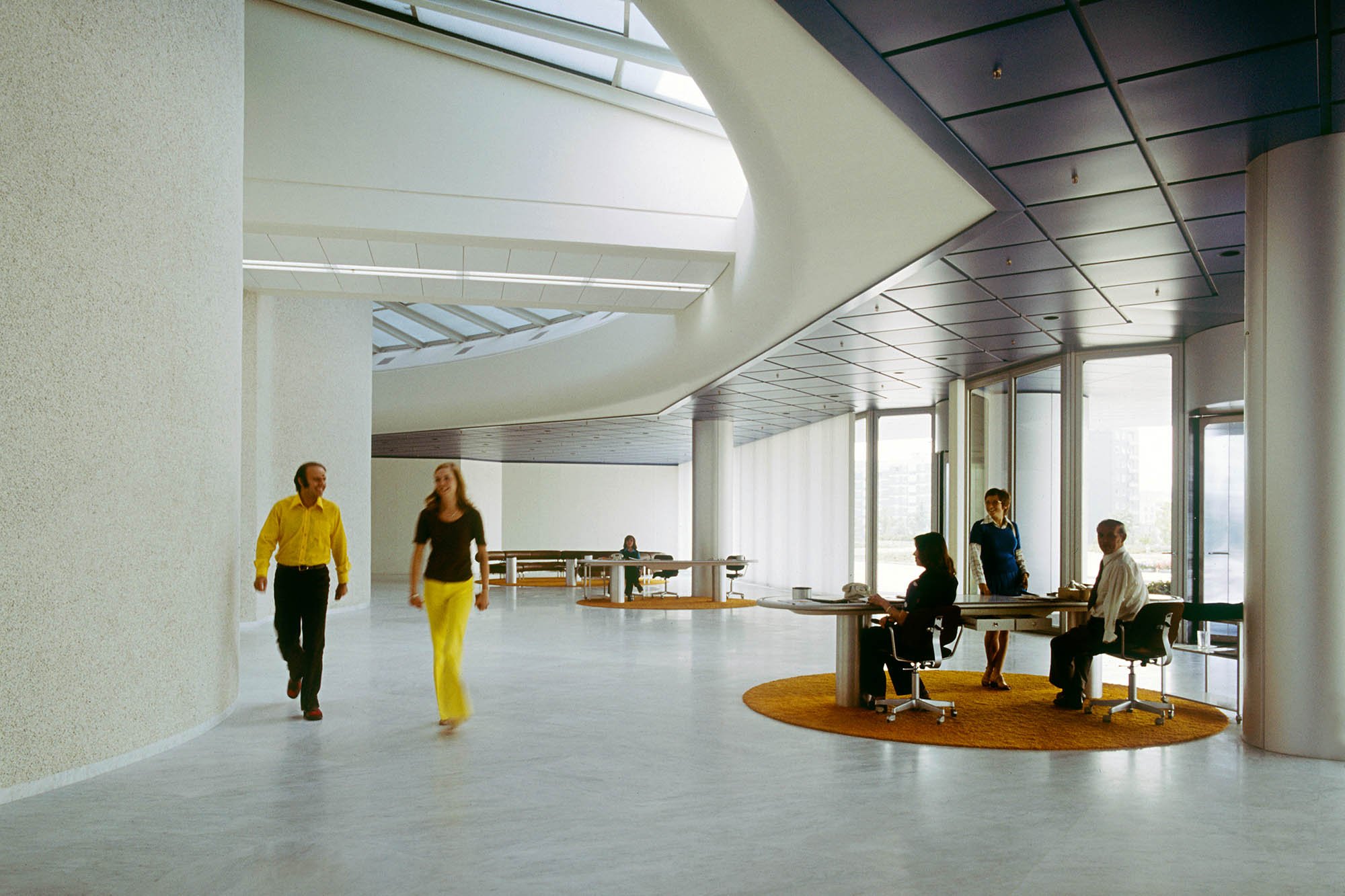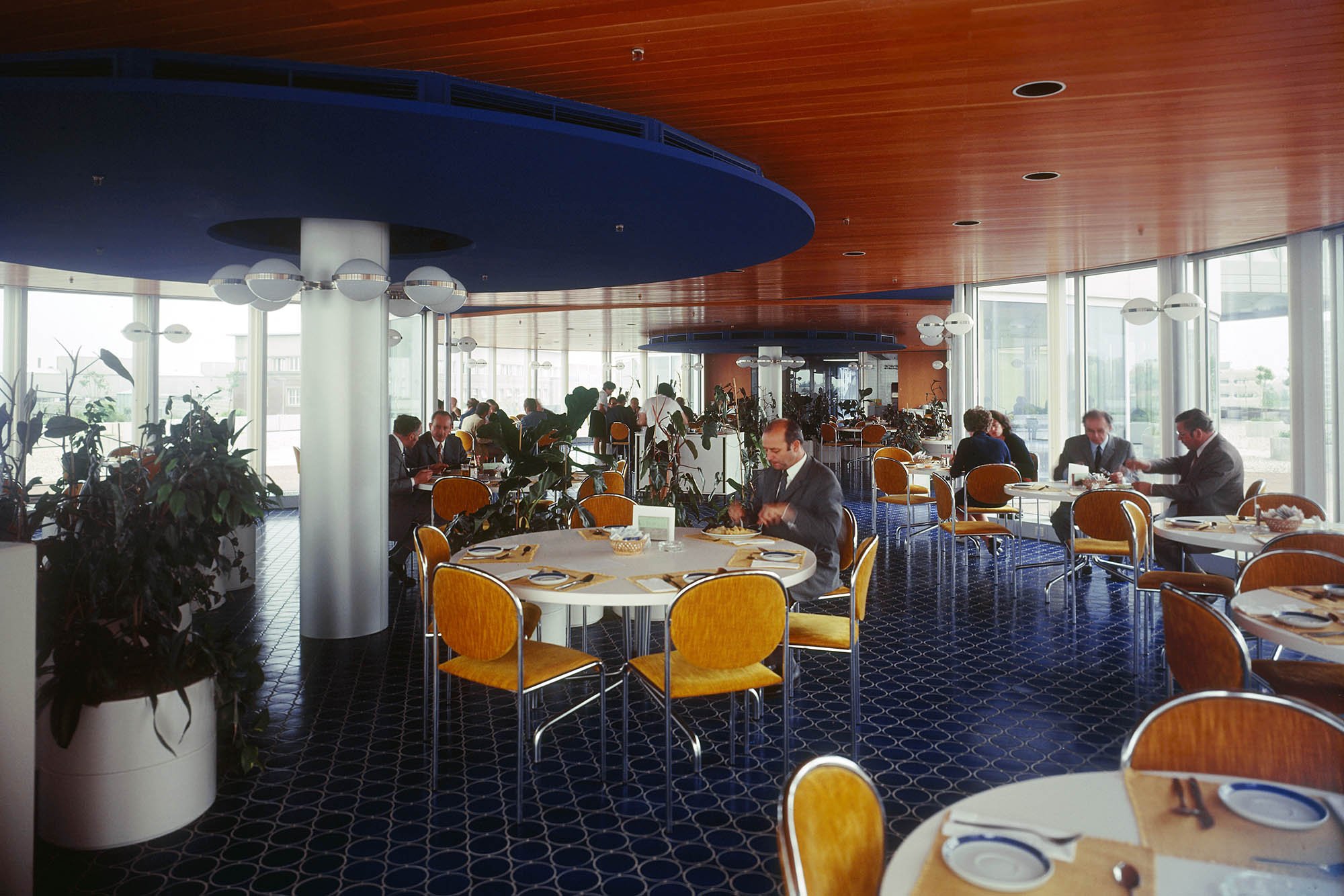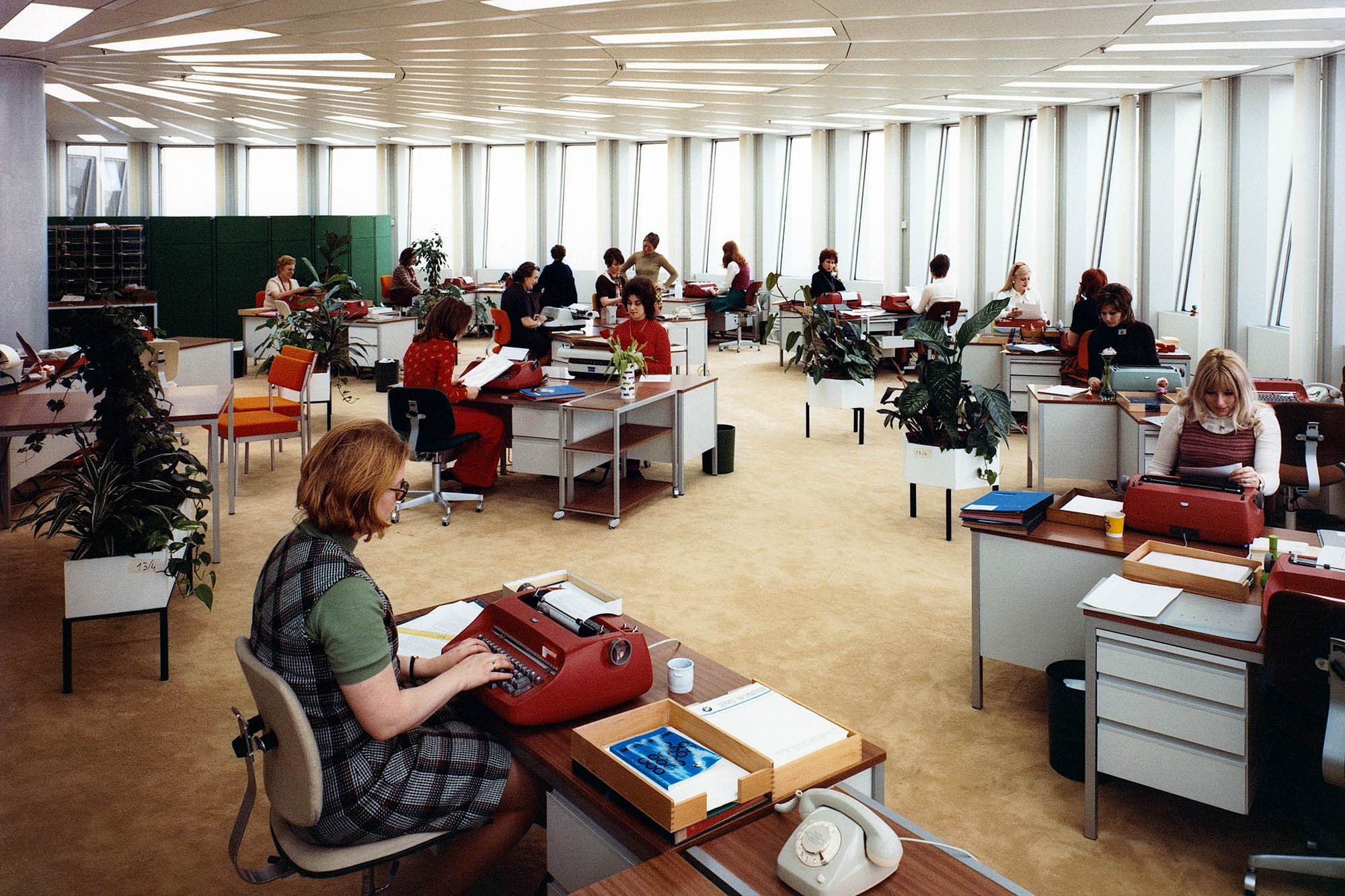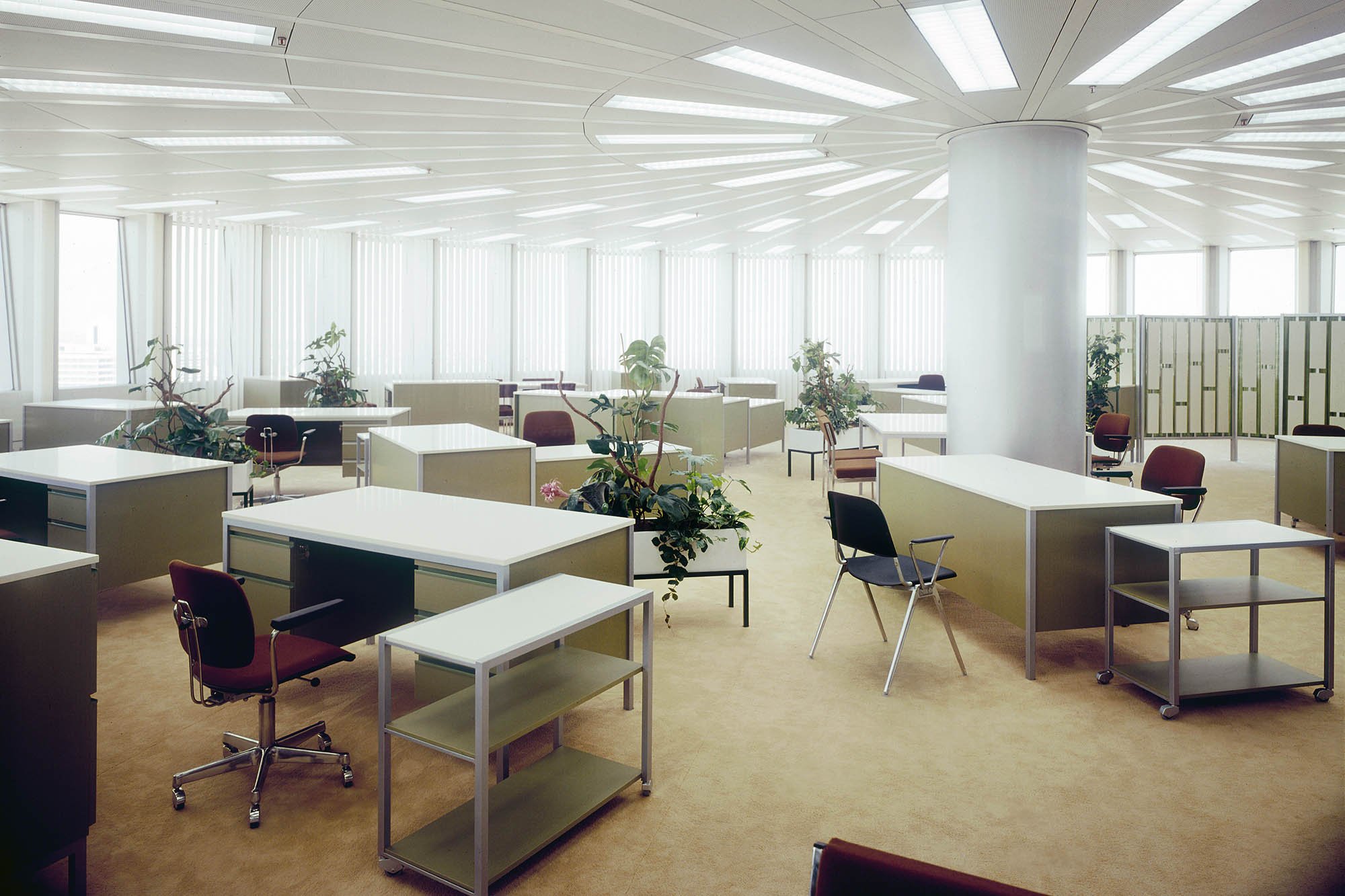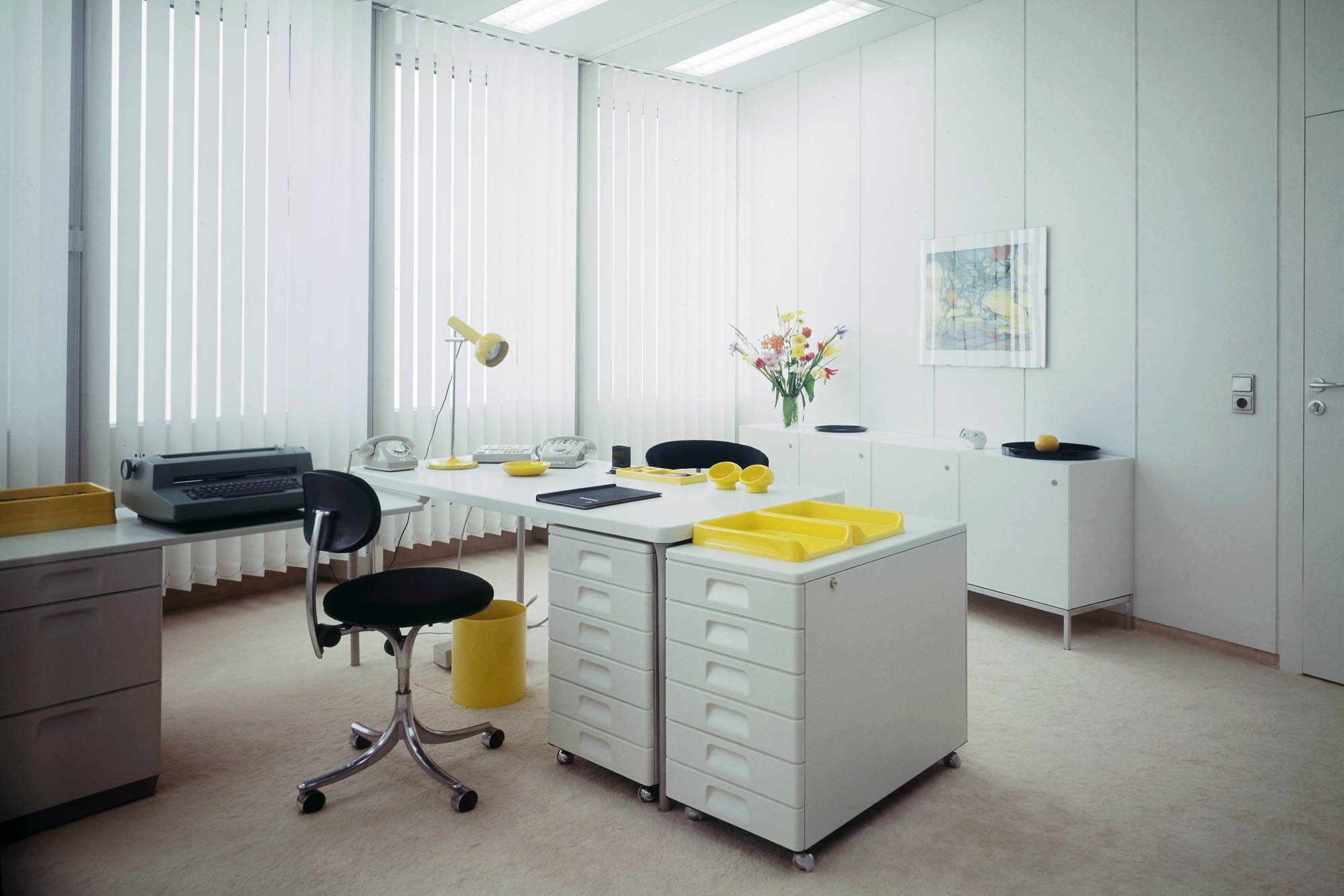Celebrating an automotive architectural icon
In 1968, BMW announced an architectural competition to design their new administration building. To convince the BMW board and significant shareholders, Professor Karl Schwanzer had a 1:1 model of a complete cloverleaf-shaped floor built at the studios of Bavaria Film. In December of the same year, BMW's management awarded him the contract to build the new headquarters.
Schwanzer's set and the pitch film shot also involved Rolf Zehetbauer, who won an Academy Award in 1973 for Art Direction of "Cabaret". Two years later, the Hollywood film "Rollerball" was released – with the BMW tower as the architectural protagonist. Whether "Suspiria" (1977), "Bloodline" (1979), "Zwei Nasen tanken Super" (1984) or "Vaterfreuden" (2014): the BMW headquarters celebrated its very own success on the big screen.
Described by artist Peter Blake as a "unique piece of realised pop architecture," its striking architecture remains a symbol of visionary corporate decisions for a successful future.
Finished in 1972, this architectural icon was built in Munich in just 26 months.
50 years on, the BMW Headquarters, with its suspended construction, is one of the most innovative engineering buildings of the post-war period – because the four cylinders are suspended from a cruciform steel beam construction on the roof. In the process, the building did not grow from the bottom up, as was generally the case, but rather the upper floors were first manufactured time-effectively on the ground, then moved upwards hydraulically on the massive "tower shaft" made of reinforced concrete and completed in several segments.
In August 1972, opposite the renowned Olympic site designed by Behnisch & Partner with Frei Otto, the BMW Group Headquarters was completed. Designed by Austrian architect Professor Karl Schwanzer, the administrative building has since become a timeless icon with global appeal for Munich and the company. With its impressive façade, visionary construction and spatial concept, the "suspended tower" uniquely combines visual conciseness with a constructive and functional logic. The innovative power of Schwanzer's design stands for the BMW Group then as now, making the company headquarters a beacon of sustainable mobility for tomorrow.
Photos © BMW

